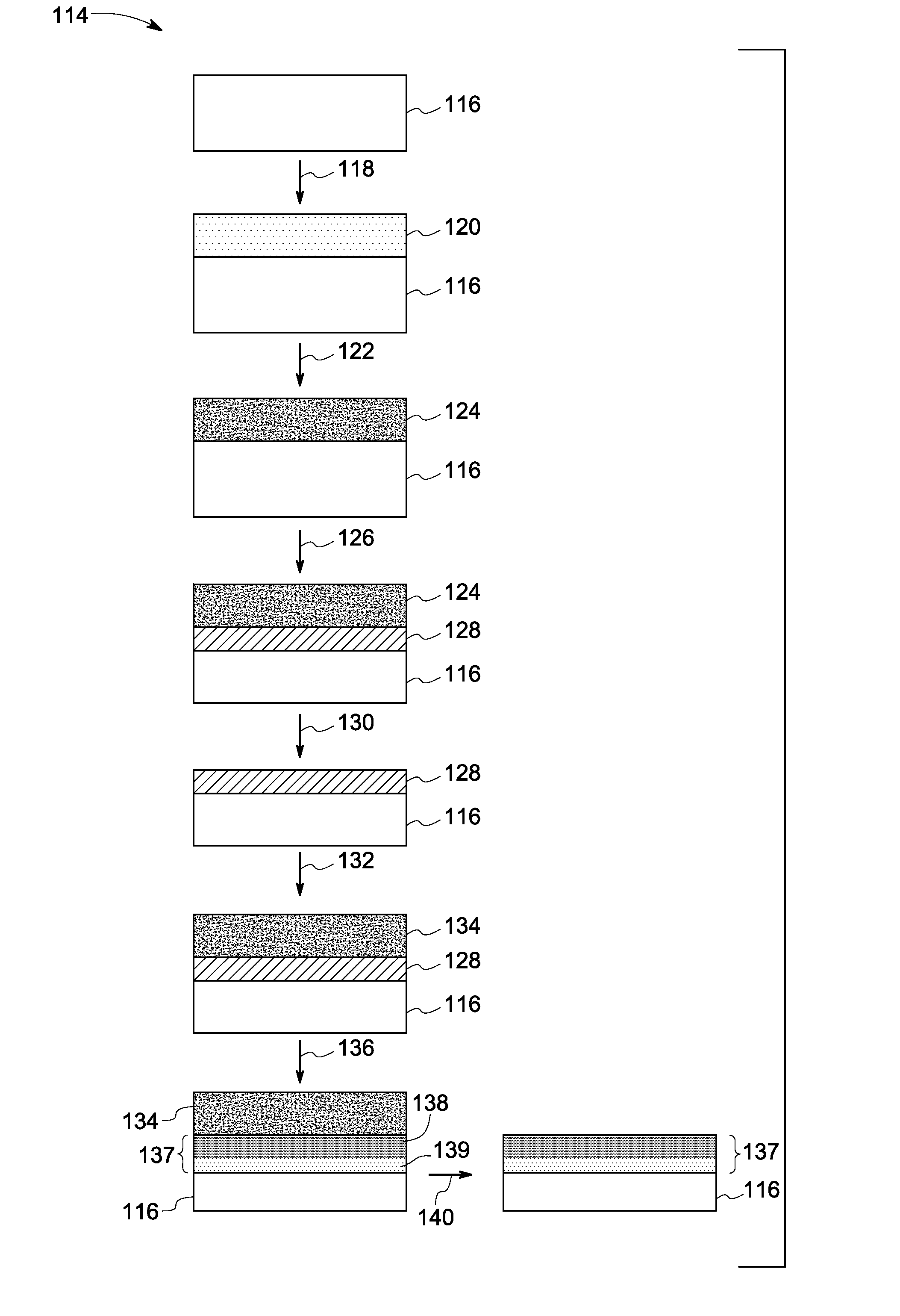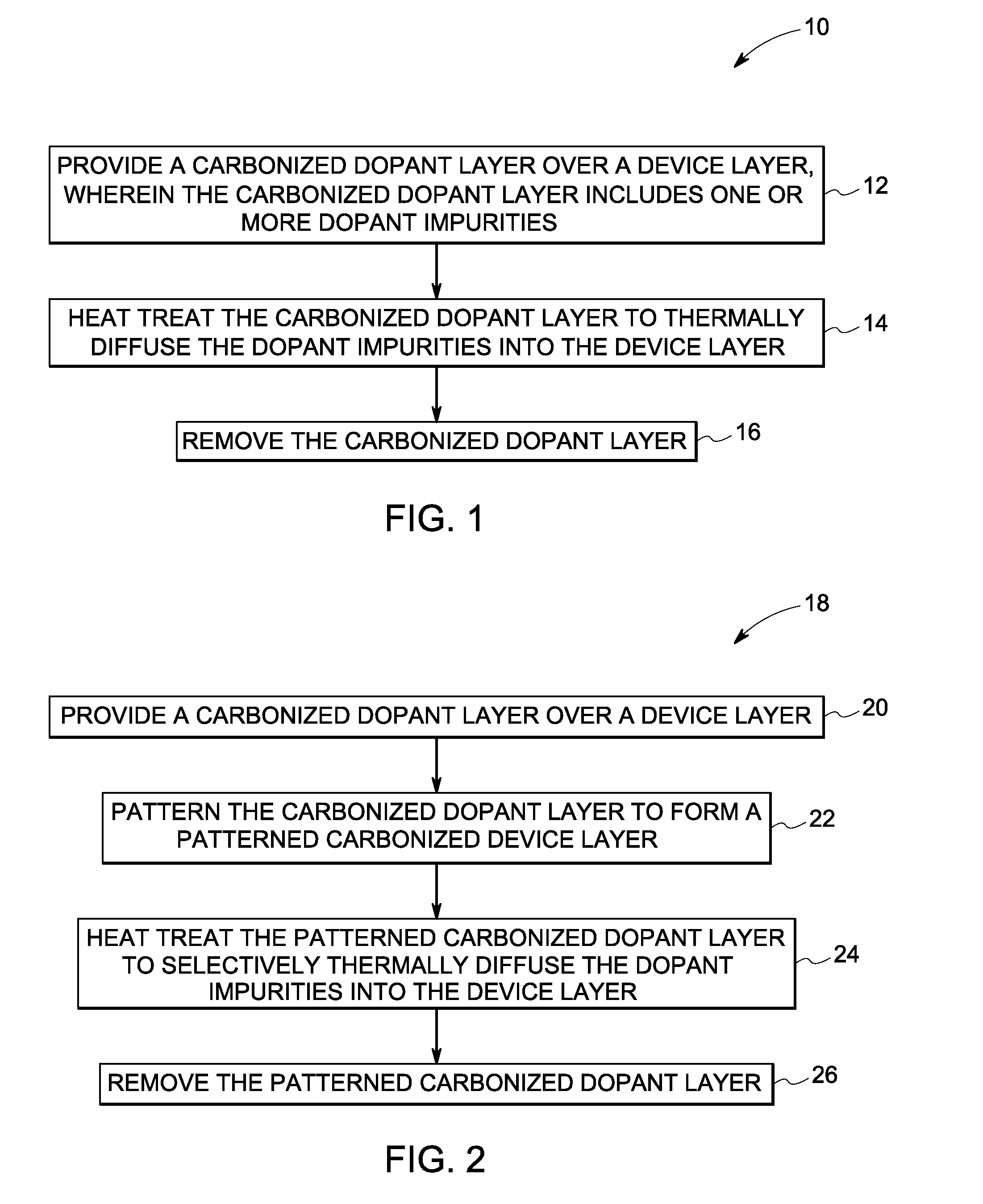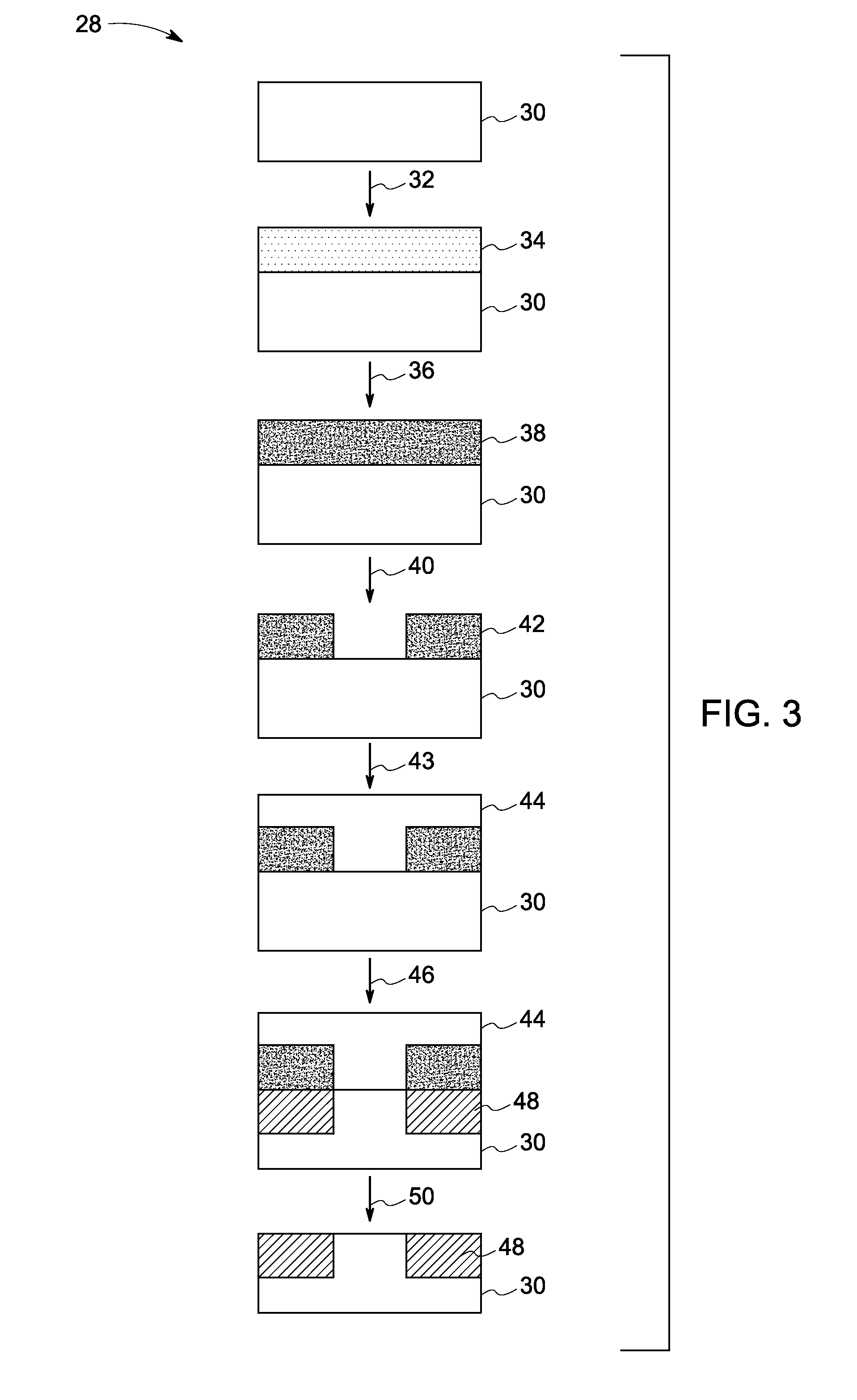Method for doping impurities
a technology of impurities and solid phase diffusion, which is applied in the direction of semiconductor/solid-state device manufacturing, basic electric elements, electric devices, etc., can solve problems such as matrix damag
- Summary
- Abstract
- Description
- Claims
- Application Information
AI Technical Summary
Benefits of technology
Problems solved by technology
Method used
Image
Examples
example 1
[0041]In one example a carbon-based dopant material is prepared by mixing a polymer photoresist (Shipley's AZ1518 or AZ1512) and a significant source of dopant (boron), tri-methyl-borate. The mixture is then evenly coated on a silicon carbide wafer by applying the mixture and spinning the silicon carbide wafer. The silicon carbide wafer coated with a carbon-based dopant layer is then annealed in a non-oxidizing ambient to drive off hydrogen and oxygen, leaving a carbonized dopant layer heavily laden with the boron impurity. The doped layer is patterned using photolithography, or is selectively etched away to accomplish selective area doping. To protect the exposed silicon carbide surface during the high temperature annealing step, the exposed area is then coated with an undoped photoresist. The silicon carbide wafer coated with the doped and patterned carbonized dopant layer is then annealed at a temperature of about, 1800° C. to about 2100° C., during which the impurities diffuse i...
example 2
[0042]In another example, a carbon-based dopant material is prepared by mixing a polymer photoresist (Shipley's AZ1518 or AZ1512) and a significant source of dopant (magnesium), Mg(OH)2. The mixture is then evenly coated on a gallium nitride wafer by applying the mixture and spinning the gallium nitride wafer. The gallium nitride wafer with the carbonized dopant layer is then annealed at temperature of about 1000° C. to about 1500° C., during which the impurities diffuse into the gallium nitride wafer.
[0043]Embodiments of the present invention are expected to provide selective doping and high quality surface with little damage to the lattice.
PUM
 Login to View More
Login to View More Abstract
Description
Claims
Application Information
 Login to View More
Login to View More - R&D
- Intellectual Property
- Life Sciences
- Materials
- Tech Scout
- Unparalleled Data Quality
- Higher Quality Content
- 60% Fewer Hallucinations
Browse by: Latest US Patents, China's latest patents, Technical Efficacy Thesaurus, Application Domain, Technology Topic, Popular Technical Reports.
© 2025 PatSnap. All rights reserved.Legal|Privacy policy|Modern Slavery Act Transparency Statement|Sitemap|About US| Contact US: help@patsnap.com



